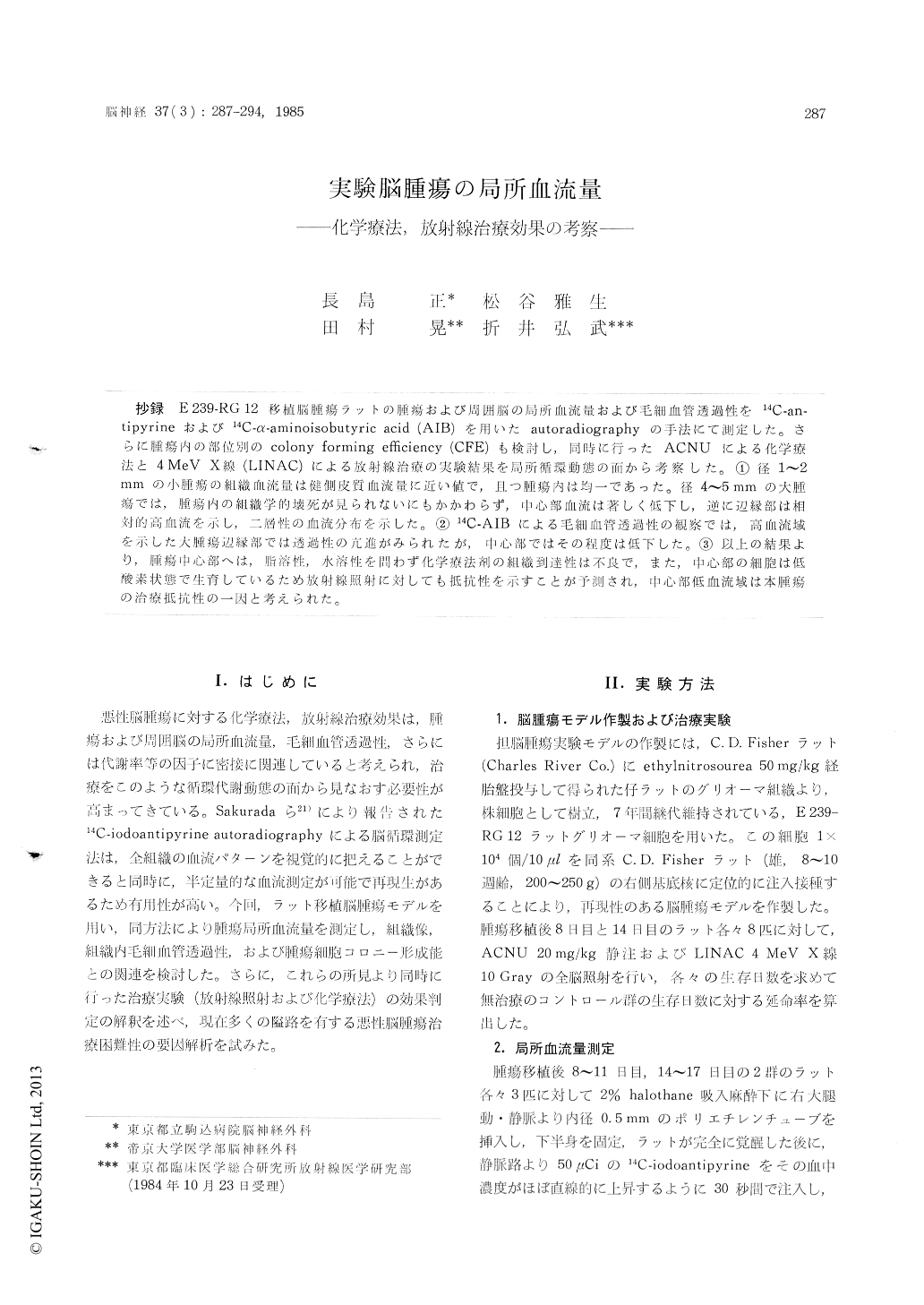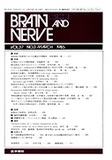Japanese
English
- 有料閲覧
- Abstract 文献概要
- 1ページ目 Look Inside
抄録 E239—RG 12移植脳腫瘍ラットの腫瘍および周囲脳の局所血流量および毛細血管透過性を14C-an—tipyrineおよび14C—α—aminoisobutyric acid (AIB)を用いたautoradiographyの手法にて測定した。さらに腫瘍内の部位別のcolony forming effciency (CFE)も検討し,同時に行った ACNU による化学療法と4MeV X線(LINAC)による放射線治療の実験結果を局所循環動態の面から考察した。①径1〜2mmの小腫瘍の組織血流量は健側皮質血流量に近い値で,且つ腫瘍内は均一であった。径4〜5mmの大腫瘍では,腫瘍内の組織学的壊死が見られないにもかかわらず,中心血流は著しく低下し,逆に辺縁部は相対的高血流を示し,二層性の血流分布を示した。②14C-AIBによる毛細血管透過性の観察では,高血流域を示した大腫瘍辺縁部では透過性の亢進がみられたが,中心部ではその程度は低下した。③以上の結果より,腫瘍中心部へは,脂溶性,水溶性を問わず化学療法剤の組織到達性は不良で,また,中心部の細胞は低酸素状態で生育しているため放射線照射に対しても抵抗性を示すことが予測され,中心部低血流域は本腫瘍の治療抵抗性の一因と考えられた。
Regional blood flow and capillary permeability in the experimental brain tumors and their sur-rounding brain tissue of rats were measured with quantitative 14C-antipyrine and 14C-α-aminoisobuty-ric acid (AIB) autoradiographic method. The phar-macokinetic implications with respect to drug delivery to tumor tissue and the effect of ionizing irradiation were discussed in these physiological measurement. A suspension of 1×104 rat glioma cells (E239 RG 12) was stereotactically implanted into the right basal ganglia of CD-Fisher rats, and spherical brain tumors developed 10-17 days after implantation with a diameter of 1~5 mm. Autoradiographic investigations were performed for rats with small tumors (1~2 mm in diameter) and large tumors (4~5 mm in diameter). The uni-form blood flow (91.7±13. 1 ml/100 g/min : mean_± S. E.) was observed in small tumors with the pa-tchy low flow area (56.7 ±12.5 ml/100 g/min) sur-rounding the tumor. In large tumors, the bloodflow was markedly decreased in the central part of the tumor (28.3±2.4 ml/100 g/min) with a ring shaped high flow area in the peripheral part (59.3 ±5.9 ml/100 mg/min). The blood flow in the brain adjacent to the tumor (30.5 ±2.5 ml/100 g/min) was lower than that in the peripheral part of the tu-mor. The uptake of 14C-AIB was quite similar to that of 14C-antipyrine suggesting the smaller per-meability in the central part of the tumor. Neu-ropathological studies did not reveal necrotic foci, but viable cells in these areas.
These findings could explain the facts that theexperimental chemotherapy (ACNU 20 mg/kg, i. v.) and radiotherapy (4 MeV X-ray 10 Gy) were effective for small tumors, but less effective for large tumors. Low blood flow area with small vascular permeability in the central part of the tumor would restrict the delivery of chemothera-peutic drugs from capillary to tumor tissue, and tumor cells in hypoxic conditions at the low blo-od flow area would be resistant to the ionizing irradiation.

Copyright © 1985, Igaku-Shoin Ltd. All rights reserved.


